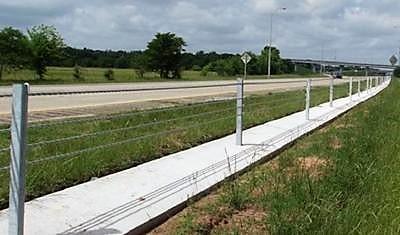TxDOT cable barrier part of #EndtheStreak
If you’ve traveled the 20-mile stretch of SH 6 between Navasota and College Station and wondered what’s going on the median, wonder no more! According to Bob Colwell, Public Information Officer for TxDOT’s Bryan District, cable median barriers are being installed.
Colwell told the Examiner,
“The $1.5 million cable median project is contracted to Gratiot Construction, LTD out of Richmond, Michigan. Work began in June 2022. The project has two locations, US 190 from OSR to FM 2818 in Brazos County, this is 2.3 miles long, and SH 6 from FM 159 in Brazos County to the Grimes County line. This is 7.2 miles. The entire project is expected to be complete in late Fall of 2022.”
#End the Streak
Colwell continued, “This project was selected as part of our program to help #EndtheStreak by installing a safety feature to prevent potential crossover collisions. This location was selected based on the existing median width and crash history on this section of SH 6.”
From November 2007 through January 2022, at least one person a day died on Texas roads. To end this 21-year long infamous record, Tx-DOT launched #EndtheStreak and has promoted it on highway billboards, social media and by word-of-mouth. The long-term goal is to end all Texas road fatalities by 2050 and cut the number in half by 2035.
What are cable median barriers?
Colwell described cable median barriers as “a type of roadside or median safety traffic barrier. It consist of steel wire ropes mounted on weak posts. Its primary purpose is to prevent a vehicle from leaving the traveled roadway and striking a fixed object or terrain feature that is less forgiving than itself.”
According to Colwell, cable median barriers function by capturing and/or redirecting the errant vehicle. The most popular use of the median cable barrier system occurs in the medians of a divided highway such as SH 6 and was selected to prevent crashes where vehicles crossover the center median. Cable barrier is used in grass center medians where the existing ground has a gentle slope and is a cost efficient solution to cover long roadway segments.
And in emergency situations where a vehicle needs to leave the road on the median side, Colwell explained that the cable is continuous and alternates from one side of the median to the other but “there will be adequate room (16-feet minimum) between the inside edge of the pavement and the cable barrier.”

